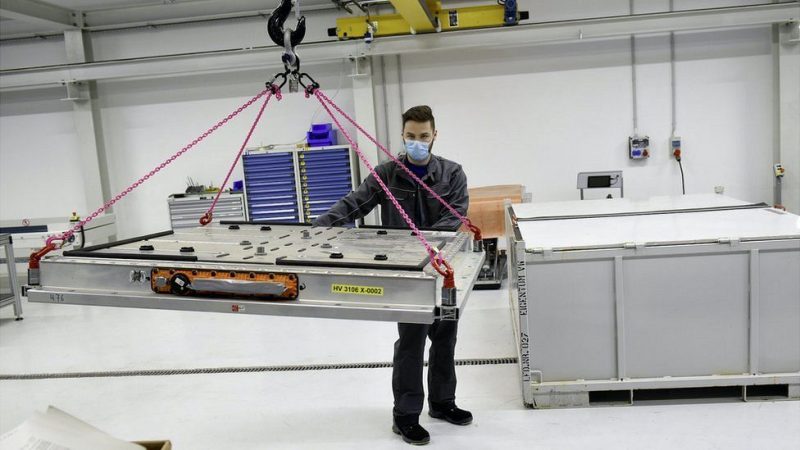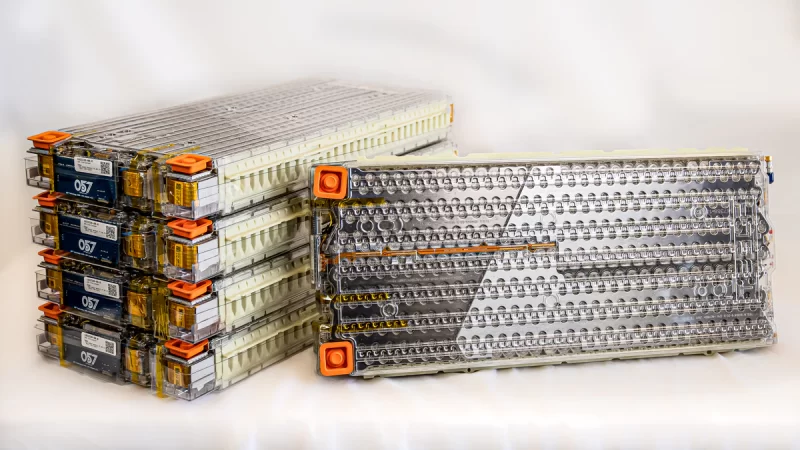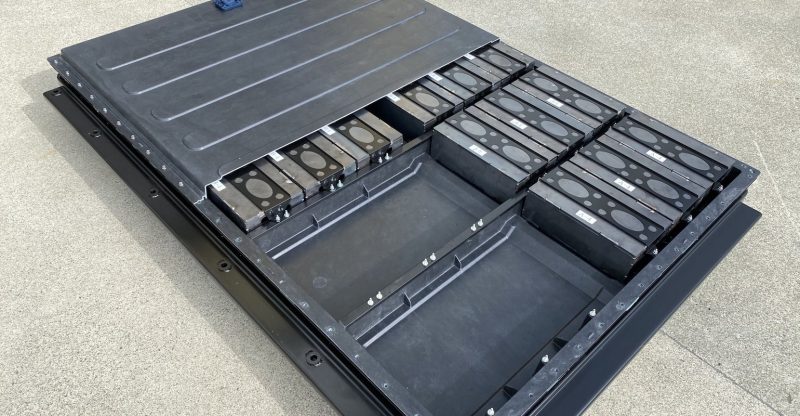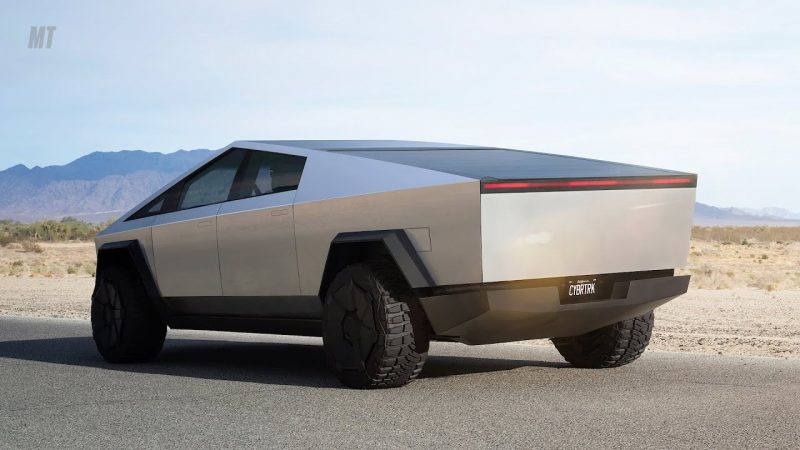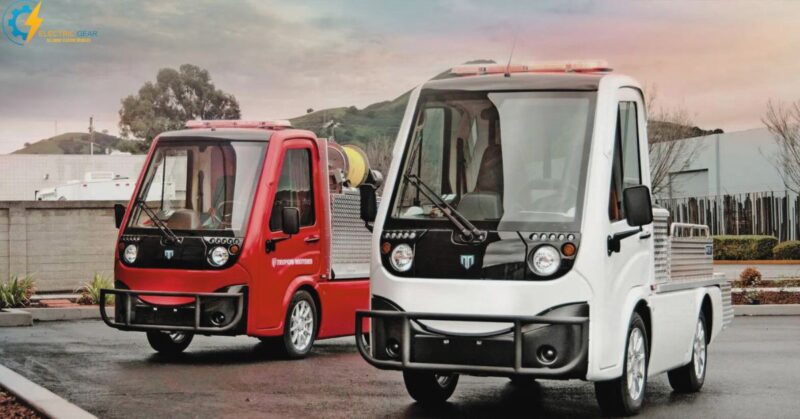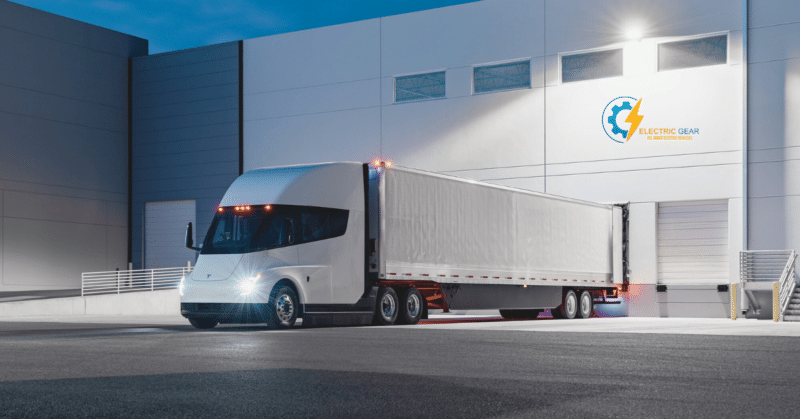Because of the additional weight of the batteries, electric vehicles are much heavier than their gasoline-powered counterparts of comparable size and performance. Think about the GMC Hummer EV, Weighting in at over 9,000 pounds, that’s about three times as heavy as a Honda Civic. Read this article to explore tesla battery weight and performance.
The mass of an electric vehicle’s battery is linked to its size and ability to hold power. As expected, a battery’s capacity to hold energy and its overall mass increase as its size increases. For comparison, batteries ranging from 6 to 12 kWh usually weigh between 100 and 150 kg, and from 60 to 100 kWh typically weigh between 350 and 600 kg.
The battery pack for an electric car typically weighs between 1,000 and 3,000 pounds. An EV’s battery’s size, composition, and manufacturer set its overall weight.
Why are Batteries so Heavier?
Typical Tesla batteries are measured at over a thousand pounds (450 kg). Considering how much Lithium and lead are needed to make automobile batteries powerful enough to power cars, that’s a lot of weight for just one component. The larger the batteries are in kWh capacity, the heavier they are. To ensure their safety, the batteries must also be encased in a thick metal shell, which adds even more weight to the EV.
The battery is expected to come in at 1,836 pounds (833 kg), giving drivers a range of 1,000 km (620 miles) before recharging. With a capacity of 200 kWh, it will be impressive.
Why Heavier is a Blessing for EV Insiders
Heavier EVs have significant safety implications because that additional mass aids passengers of electric cars in the event of a collision. According to data compiled from insurance claims, electronic car passengers are safer than those in comparable gas-powered vehicles.
This may be because there is more vacant room in electric cars, which can be used to support passengers. After all, there is no heavy metal engine under the bonnet.
For those unfortunate enough to be hit by an electric car, the additional electric car weight roughly means that more collision energy will be passed to the Vehicle on the other end of the hit.
When two moving items collide, the larger one will continue along its original path. When the lighter one abruptly changes course, it will crash into the heavier one and cause a startling diversion that could be dangerous to the people inside the other Vehicle. The additional weight of the heavy car (possibly an EV in this case) can save the lives of the people inside if it simply pushes its way through.
Experts have differing views on how much of a problem heavier cars will cause to road surfaces and structures. Large industrial lorries are much heavier than the heaviest electric passenger car. Still, most roadways, motorways, and bridges are built to accommodate them, and even the heaviest EVs are least likely to cause any damage to the roads.
Why are lithium-ion Batteries so Heavy?
The cells and their components account for roughly 60–75% of an EV battery’s overall weight, while the metal covering, wires, and temperature and battery management systems account for the remaining 25–40%.
Additional elements like cobalt and manganese are also present in EV batteries. For example, the Tesla Model S battery has about 62.6 kilograms (138 pounds) of Lithium, 14 kilograms (31 pounds) of cobalt, and 20 kilograms (44 pounds) of manganese, but this can vary widely based on battery capacity.
Additionally, electric cars are heavier than comparable gasoline-powered models. For instance, the electric Volvo XC40 weighs about 1,000 pounds compared to a gas-powered Volvo XC40.
EV Battery Weight Per kWh
As expected, a battery’s capacity to hold energy and its overall mass increase as its size increases. For comparison, batteries ranging from 6 to 12 kWh usually weigh between 100 and 150 kg, while those ranging from 60 to 100 kWh typically weigh between 350 and 600 kg.
The size of typical EV batteries is listed in the chart below. There is a standard unit of measurement for the volume and quantity of these batteries among the makers of electric vehicles, and that unit is the kilowatt-hour (kWh).
| Battery Size | Average Weight |
|---|---|
| 22 kilowatt hour | 363 pounds or 165 kg |
| 30 kilowatt hour | 547 pounds or 248 kg |
| 40 kilowatt hour | 672 pounds or 305 kg |
| 50 kilowatt hour | 718 pounds or 326 kg |
| 60 kilowatt hour | 948 pounds or 430 kg |
| 70 kilowatt hour | 1102 pounds or 500 kg |
| 80 kilowatt hour | 1267 pounds or 575 kg |
| 90 kilowatt hour | 1389 pounds or 630 kg |
| 100 kilowatt hour | 1543 pounds or 700 kg |
| 200 kilowatt hour | 1836 pounds or 833 kg |
| 600 kilowatt hour | 7800 pounds or 3538 kg |
Tesla Battery Weight Per kWh
Tesla has stopped manufacturing the three below-mentioned battery packs due to the reasons best known to Tesla and is now manufacturing only batteries with 100 kWh weighing 1377 pounds or 625 kilograms. The weight of discontinued battery packs is, however, as under:
- 60 kWh–848 pounds or 585 kilogram
- 75 kWh–1168 pounds or 539 kilogram
- 90 kWh:1250 pounds or 567 kilograms
Factors Affecting EV battery Weight
large amounts of Lithium-ion
Laptops and household electronics were the original targets for lithium-ion batteries. These are now gaining popularity and are extensively used by most EV manufacturing companies because of their high energy efficiency and extended lifespan.
One cubic foot of Lithium weighs 33,3 pounds (151 kilograms), so the element is quite weighty.
Typical lithium-ion batteries degrade with age in addition to being temperature sensitive. Due to their highly corroded metal oxide anode SEI layer and flammable organic fluids, traditional lithium-ion batteries can easily catch fire if pierced or charged improperly.
Metal armor around the battery
Battery explosions and blasts can happen if preventive measures are not taken, and any damage to the battery can be caused due to any of the reasons. The battery must be encased and wrapped in a sturdy casing to prevent such a disaster.
This armored structure is constructed from thick metal for maximum safety. When you hear “heavy-duty” in conjunction with “metal,” you know the object will be thicker and heavier than usual.
EVs need longer-lasting batteries.
The electric vehicle battery can keep it going for hundreds of kilometers without recharging. Because of this, these batteries are constructed to be as large as necessary and possible for their intended function.
The greater the kWh rating of an electric vehicle’s battery, the heavier it is. Early findings indicate that the 600 kWh battery in the Tesla Semi vehicle, which has yet to be revealed, weighs around 8,000 pounds. A similar 1,000-pound battery is standard on all Tesla versions.
Tesla Model X Battery Weight
There were four distinct lithium-ion battery cells for this type, each with its specifics (60, 75, 90, and 100 kWh).
As mentioned earlier, Tesla is no longer manufacturing the first three packs, and currently, only the 100 kWh battery is available for this Tesla model 3. The Model 3, 100 kWh battery pack weighs around 1377 pounds (625 kg).
A premium electric vehicle, its 91 cubic feet of storage space is promoted as the finest in its class. It has a remarkable 5,000-pound (2,268-kilogram) towing capability and convenient falcon-wing door openings.
Tesla Model Y Battery Weight
Tesla Model Y is what you want if you’re looking for something between Model 3 and Model X. This variant is a Vehicle like the famous Model 3, but it uses 75% of its components. However, it’s less significant than the Model X.
The Vehicle’s total weight is 4,480 lb (2,032 kg), while the battery adds another 1,168 lb (408 kg) (530 kg).
- Vehicle’s total weight: 4,480 pounds or 2,032 kilograms
- Battery weight in pounds: 1,168 pounds
- Battery weight in kilograms: 530 kilograms
Tesla Model 3 Battery Weight
From 2018 to 2020, the Model 3 was the world’s best-selling electric vehicle, making it not only Tesla’s best-selling Vehicle but also the best-selling one worldwide. Thanks to its intermediate price point, more people can affordably try electric cars like the Model 3.
There are two Model 3 variants available: Standard Range and Extended Range, both of which have slightly different cells.
The Tesla Model 3 Long Range has a battery pack with 4,416 cells, with 46 cells in each of the 96 groups. The battery weighs 1,060 pounds (489 kg).
Tesla Roadster Battery Weight
Tesla initially specialized in a specific market of electric racing cars, and in 2008, it released a racing vehicle known as the Tesla Roadster under the Tesla Motors brand. This vehicle has many notable aspects, the first being using lithium-ion battery cells.
It had a 53 kWh capability and weighed 992 pounds (450 kg). The 11 sheets were linked in series, and within each sheet, 9 blocks were also connected in series.
Tesla Cybertruck Battery Weight
Production of this vehicle is expected to begin in the latter half of 2023, so we just have speculations and projections for now.
The company’s CEO stated that the battery could be as heavy as the one in a Ford F-150. F-150 comes in a few different battery weight configurations, ranging from 4,000 pounds (1,810 kilograms) to 5,600 pounds (2,540 kg).
Other calculations suggest a 250 kWh cell could weigh over 1,500 kilograms. For example, you can anticipate 100 kWh, 200 kWh, and 250 kWh battery packs. The latter’s range needs to be at least 500 miles (800 km.)
How Much Does a 100 kWh Tesla Battery Weight
- 60 kWh – 848 lbs (385 kg),
- 75 kWh – 1168 lbs (530 kg),
- 90 kWh – 1250 lbs (567 kg),

Imran is an experienced content writer who crafts engaging and informative articles for a variety of industries. With a keen eye for detail and a passion for storytelling, Imran delivers high-quality content that resonates with readers. Whether he’s writing blog posts, social media content, or website copy, Imran is committed to delivering compelling content that drives results.


